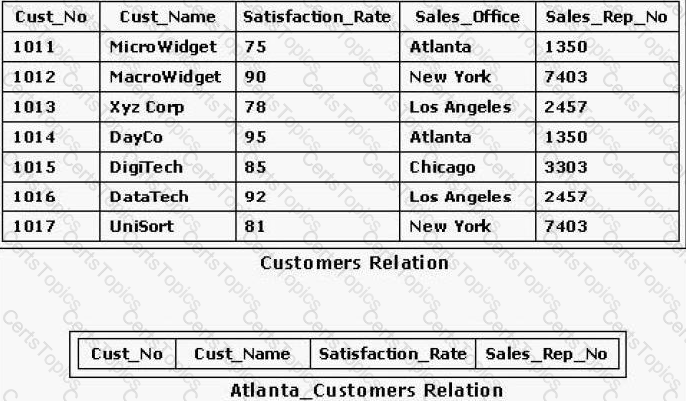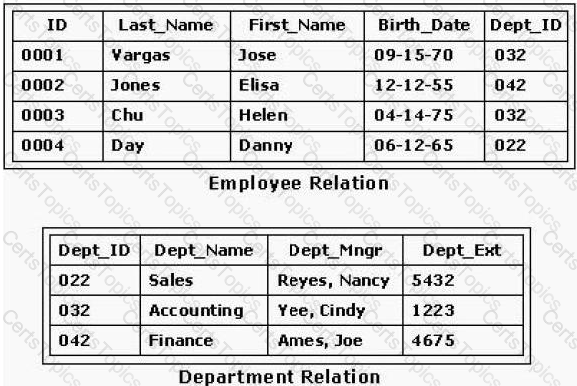Which characteristic is an advantage of a database management system?
Consider the Information Engineering diagram shown in the exhibit for a building management company. Referential integrity must be maintained such that a building cannot be deleted when it has residents. Building_ID, R_ID, Room_Count and Room_Num are integer numbers, whereas Bldg_Name, Location and Res_Name are all represented by variable-length strings with a maximum of 20 characters. Which SQL statement best implements the relations shown in this diagram?

Consider the relations shown in the exhibit. Which of the following SQL statements would enter data from the Customers relation into the Atlanta_Customers relation?

Consider the Employee relation shown in the exhibit. A database manager wants to set up a view called Emp_Dept that allows users to find employees and their department ID numbers. Which SQL statement will accomplish this?
